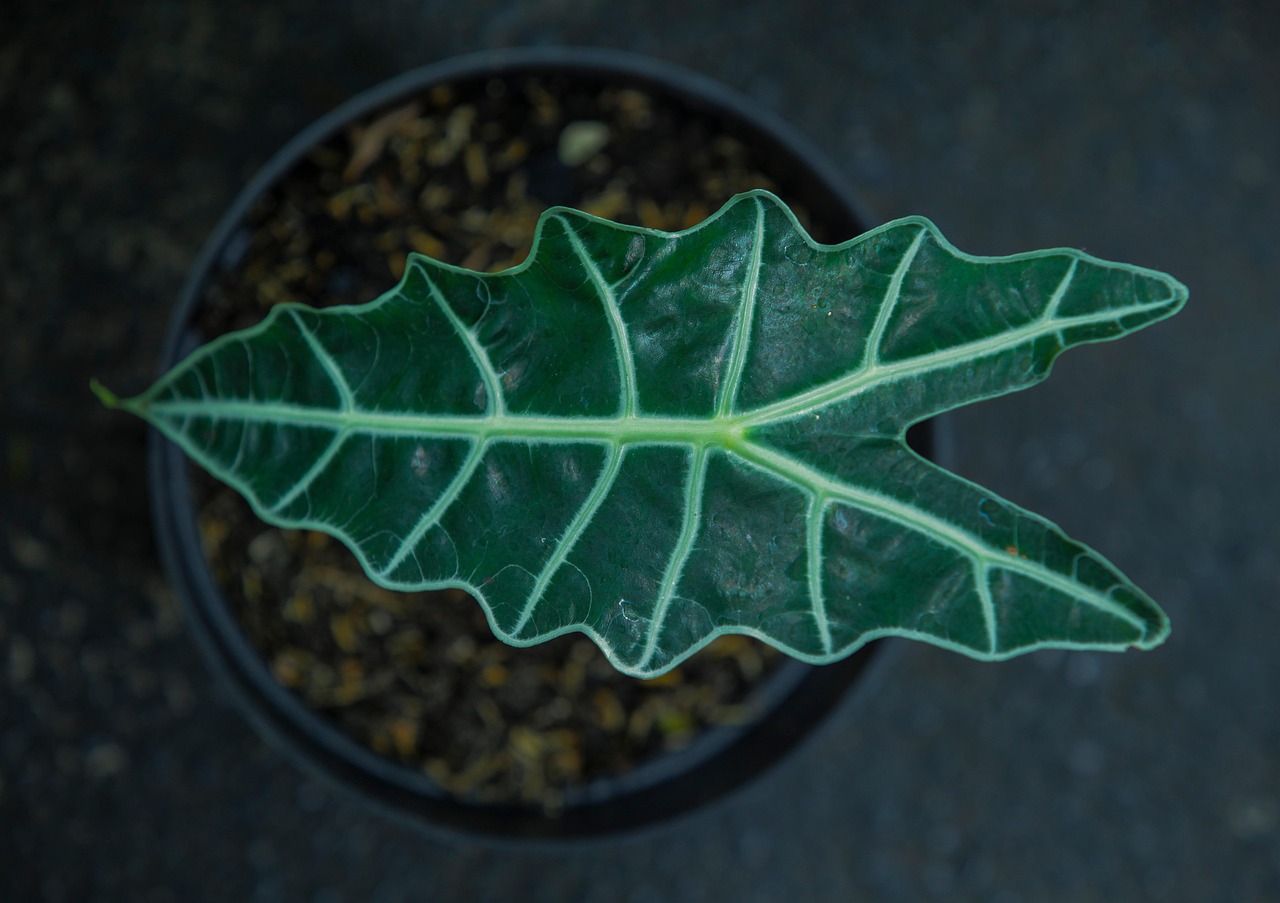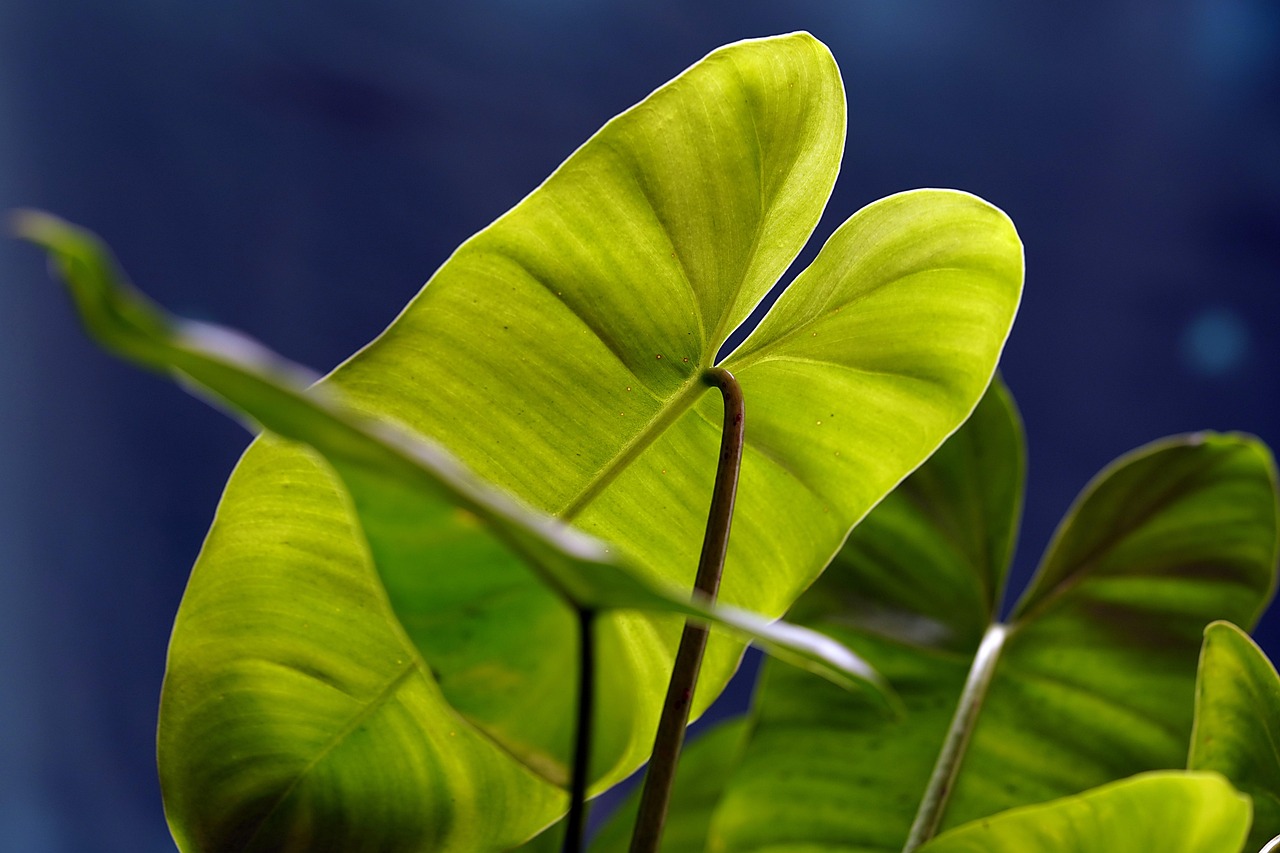The Alocasia Dragon Scale is a stunning houseplant known for its unique leaf texture and striking color. To thrive, it requires specific care, including proper light, watering, humidity, and temperature management. With the right conditions, this plant can be a beautiful addition to your home.
Overview of Alocasia Dragon Scale

The Alocasia Dragon Scale, scientifically known as Alocasia baginda, is a tropical plant that originates from Southeast Asia. It belongs to the family Araceae and is highly sought after for its remarkable foliage. The leaves are shaped like dragon scales, hence the name, and they exhibit a rich green color with prominent venation.
This plant can grow up to 3 feet tall indoors and can thrive in various environments if its basic needs are met. The Alocasia Dragon Scale is not only visually appealing but also plays a role in improving indoor air quality. Understanding its requirements is essential for ensuring its health and longevity.
Key Care Requirements
Caring for the Alocasia Dragon Scale involves several key factors. Each aspect plays a vital role in maintaining its health and enhancing its growth. Here are the primary care requirements:
| Care Aspect | Requirement |
|---|---|
| Light | Bright, indirect sunlight |
| Water | Keep soil consistently moist, but not soggy |
| Humidity | High humidity (60% or more) |
| Temperature | 65°F to 80°F (18°C to 27°C) |
Light Requirements
One of the most crucial aspects of caring for the Alocasia Dragon Scale is providing the right lighting conditions. This plant thrives in bright, indirect sunlight. Direct sunlight can scorch the leaves and hinder their growth.
If you notice your plant stretching towards the light or if the leaves are losing their vibrant color, it may be an indication that it needs more light. A location near an east-facing window is often ideal. However, avoid placing it in direct afternoon sun where it may become too hot.
Watering Practices
Watering the Alocasia Dragon Scale correctly is vital for its survival. The soil should be kept consistently moist but not waterlogged. Overwatering can lead to root rot, while underwatering can cause the leaves to droop or become crispy at the edges.
To determine when to water, check the top inch of soil. If it feels dry at this depth, it’s time to water. Ensure excess water drains out of the pot to prevent standing water at the bottom.
Humidity Needs
The Alocasia Dragon Scale thrives in high humidity environments. Ideally, humidity levels should be around 60% or higher. Dry air can lead to issues such as browning leaf edges or slowed growth.
If your home has low humidity, consider using a humidifier. Alternatively, you can place a tray filled with water and pebbles near the plant or mist the leaves regularly to boost humidity levels.
Temperature Preferences
This tropical plant prefers warm temperatures ranging from 65°F to 80°F (18°C to 27°C). Sudden temperature drops or exposure to cold drafts can stress the plant and impact its overall health.
When caring for your Alocasia Dragon Scale, be mindful of its environmental needs. By providing the right light, water, humidity, and temperature, you can ensure your plant thrives and remains a stunning centerpiece in your home.
Soil and Potting Requirements
Choosing the right soil and pot for your Alocasia Dragon Scale is crucial for its growth. The plant thrives in well-draining soil that retains some moisture without becoming soggy. A suitable pot will also help manage excess water, which is vital to prevent root rot.
Ideal Soil Mix
A well-aerated, fast-draining potting mix is essential for the health of your Alocasia. You can create your own soil mix or purchase a pre-made formulation. Here are some components to consider:
- Potting Soil: Start with a quality potting soil as the base.
- Pine Bark: Adds aeration and drainage, preventing compacting of the soil.
- Coconut Coir or Peat Moss: Helps retain moisture while still allowing airflow.
- Perlite or Pumice: Improves drainage and prevents soil from becoming too heavy.
A recommended mix could consist of 50% potting soil, 25% pine bark, and 25% perlite or pumice. This combination ensures that the soil retains enough moisture while providing excellent drainage.
Selecting the Right Pot
The choice of pot is equally important as the soil. Consider the following when selecting a pot:
- Drainage Holes: Ensure your pot has adequate drainage holes at the bottom to allow excess water to escape.
- Size: Choose a pot that is slightly larger than the root ball of your plant. A pot that is too big can lead to overwatering and root rot.
- Material: Terracotta pots are excellent for promoting airflow but may dry out faster. Plastic pots retain moisture longer but might trap excess water.
Fertilization Needs
Fertilizing your Alocasia Dragon Scale is essential for promoting healthy growth and vibrant foliage. However, it’s important to fertilize correctly to avoid over-fertilization, which can harm the plant.
Types of Fertilizers
You can use different types of fertilizers to nourish your plant:
- Liquid Fertilizer: A balanced liquid fertilizer diluted to half strength can be applied every four to six weeks during the growing season (spring and summer).
- Slow-Release Fertilizer: Granular slow-release fertilizers can be mixed into the top layer of soil at the beginning of the growing season.
Signs of Nutrient Deficiency
Keep an eye on your plant for signs of nutrient deficiency, which may include:
- Yellowing Leaves: Often indicates a nitrogen deficiency.
- Pale New Growth: May suggest a lack of essential nutrients.
If you notice these symptoms, consider adjusting your fertilization routine. Always follow instructions on the fertilizer package to ensure proper application.
Pest Management
The Alocasia Dragon Scale can be susceptible to pests like spider mites, aphids, and mealybugs. Regularly checking your plant for signs of infestation is crucial for maintaining its health.
Common Pests
Here are some common pests that may affect your Alocasia:
- Spider Mites: These tiny pests thrive in dry conditions and can cause leaf discoloration.
- Aphids: Small, green insects that cluster on new growth and can stunt plant development.
- Mealybugs: White, cotton-like pests that can weaken the plant by feeding on its sap.
Treatment Options
If you encounter any pests, here are some treatment options:
- Insecticidal Soap: A non-toxic option that suffocates pests on contact.
- Neem Oil: An organic pesticide that disrupts the life cycle of insects.
- Manual Removal: For minor infestations, wiping leaves with a damp cloth can help eliminate pests.
Regularly inspecting your plant and maintaining optimal humidity levels can help prevent pest issues from arising.
Propagation Techniques
Propagating the Alocasia Dragon Scale can be an enjoyable way to expand your collection. There are a few methods to consider when propagating this plant.
Tiss

ue Division
The most common method for propagating Alocasia is through division. This method is best done in spring when the plant is actively growing. Here’s how to do it:
- Remove the Plant: Gently take the plant out of its pot, being careful not to damage the roots.
- Divide the Rhizomes: Use a clean, sharp knife to divide the rhizomes into sections, ensuring each section has at least one healthy leaf and root system.
- Replant: Plant each division into its own pot with fresh potting mix and water lightly.
This method not only allows you to propagate new plants but also helps rejuvenate an overcrowded Alocasia Dragon Scale.
Common Issues and Troubleshooting
Caring for the Alocasia Dragon Scale can sometimes present challenges. Understanding common issues and how to troubleshoot them will help you maintain a healthy plant. Here are some frequent problems and their solutions.
Leaf Discoloration
Leaf discoloration is one of the most common signs of distress in the Alocasia Dragon Scale. Several factors can contribute to this issue:
- Yellow Leaves: This often indicates overwatering or nutrient deficiency. If the soil is soggy, reduce watering and allow the plant to dry out slightly.
- Browning Leaf Edges: Browning can signal low humidity or underwatering. Ensure the humidity levels are adequate and check the soil moisture regularly.
- Pale Leaves: If the leaves appear washed out, it may be a sign of too much direct sunlight. Move the plant to a location with bright, indirect light.
Wilting or Drooping Leaves
Wilting or drooping leaves can be concerning. This issue may arise from overwatering or underwatering:
- Underwatering: If the soil is dry and the leaves are limp, increase your watering frequency.
- Overwatering: If the soil feels muddy and the leaves are wilting, reduce watering immediately to prevent root rot.
Regularly monitoring soil moisture can help prevent these issues from escalating.
Pest Infestations
As previously mentioned, pests like spider mites and mealybugs can affect your Alocasia Dragon Scale. If you notice any signs of infestation, take immediate action:
- Inspect Regularly: Check both the tops and undersides of leaves for pests.
- Isolation: If you find pests, isolate the affected plant to prevent spreading to other plants.
- Treatment: Use insecticidal soap or neem oil for treatment, following the instructions on the product label.
Seasonal Care Adjustments
The care routine for your Alocasia Dragon Scale may need adjustments with changing seasons. Here’s how to adapt your care throughout the year.
Spring and Summer Care
The growing season for the Alocasia Dragon Scale is spring and summer. During these months, focus on encouraging growth:
- Fertilization: Increase fertilizer frequency during these months to support new growth.
- Watering: Water more frequently, as the plant will require more moisture during active growth.
- Humidity: Maintain elevated humidity levels, as warmer temperatures can dry out air indoors.
Autumn and Winter Care
<pAs temperatures drop in autumn and winter, your Alocasia will enter a dormant phase. Adjust your care accordingly:
- Reduce Watering: Allow the soil to dry out more between waterings. Overwatering during this time can lead to root rot.
- Lower Fertilization: Cut back on fertilizing, as the plant’s nutrient needs decrease in dormancy.
- Maintain Temperature: Keep the plant in a warm location, away from cold drafts or extreme temperature fluctuations.
Tips for Successful Growth
To ensure y

our Alocasia Dragon Scale thrives, consider implementing these helpful tips:
- Rotate Your Plant: Regularly rotate your plant to ensure even growth. This helps all sides receive adequate light and prevents lopsided growth.
- Avoid Overcrowding: Ensure adequate space between plants if you have multiple houseplants. Crowded conditions can lead to increased humidity and pest issues.
- Clean Leaves Regularly: Dust can accumulate on leaves, blocking sunlight. Wipe leaves gently with a damp cloth to keep them clean and healthy.
- Monitor for Signs of Stress: Stay vigilant for any changes in your plant’s appearance or behavior. Early detection of issues can lead to easier solutions.
Caring for the Alocasia Dragon Scale requires attention and effort, but with proper care and adjustments throughout the seasons, this stunning plant can flourish beautifully in your home environment.
Additional Resources and Community Support
To enhance your experience with the Alocasia Dragon Scale, consider exploring additional resources and connecting with fellow plant enthusiasts. There are many online communities and platforms where you can gain valuable insights, ask questions, and share your experiences.
Online Forums and Groups
Joining forums or social media groups dedicated to houseplants can be incredibly beneficial. Here are some popular platforms:
- Facebook Groups: There are numerous groups focused on houseplant care where members share tips, photos, and advice.
- Reddit: Subreddits such as r/houseplants provide a wealth of information and a community of supportive plant lovers.
- Instagram: Following plant influencers can inspire you with creative care ideas and showcase stunning Alocasia specimens.
Books and Guides
If you prefer in-depth knowledge through reading, consider investing in books that focus on houseplant care. Here are some recommended titles:
- The Houseplant Manual by David Squire – A comprehensive guide to various houseplants, including care tips.
- Plant Parenting by Darryl Cheng – Offers insights into propagation and care techniques.
- The New Plant Parent by Darryl Cheng – Focuses on understanding plant needs and nurturing them effectively.
Environmental Considerations
When caring f

or the Alocasia Dragon Scale, it’s essential to consider environmental impacts. Being mindful of sustainable practices can benefit both your plant’s health and the planet:
- Choose Organic Fertilizers: Opt for organic fertilizers that are less harmful to the environment and safe for indoor air quality.
- Repurpose Containers: Instead of buying new pots, consider repurposing items you already own. This reduces waste and adds a personal touch to your plant display.
- Compost: If possible, create a composting system for your organic waste. This can enrich your soil mix naturally.
Final Thoughts
The Alocasia Dragon Scale is a striking addition to any indoor garden, offering both aesthetic appeal and air-purifying benefits. By following the essential care guidelines outlined in this article, you can cultivate a thriving plant that enhances your living space.
Remember that each plant is unique, and it may take time to understand the specific needs of your Alocasia. Regularly monitor its condition, adjust care routines as necessary, and stay informed through community resources. With patience and dedication, your Alocasia Dragon Scale can flourish beautifully for years to come.
Embrace the journey of plant care as an opportunity to learn and grow alongside your Alocasia. Enjoy the beauty it brings to your home and the satisfaction of nurturing such a remarkable plant.
